A recent report that a battery compartment in a Tesla Model S "spontaneously caught fire while it was traveling freeway speeds" on a California highway left social media users questioning the firefighter's chosen tactic for combating the flames.
On Saturday, the Sacramento Metropolitan Fire District, a.k.a. "Metro Fire," posted images and videos of the charred electric vehicle on Twitter.
The District said it took nearly "6,000 gallons of water" to extinguish the conflagration.
Thankfully, no one was injured.
The Tesla Model S, however, didn't fare as well as evidenced by the EV's melted metal exterior.
Photos showed the driver's side of the vehicle hoisted by jacks so that the firemen could access and spray water on the large lithium-ion battery pack lodged underneath.
Metro Fire detailed the process of how they put out the massive blaze.
"Crews arrived to a Tesla Model S engulfed in flames, nothing unusual prior."
"2 Fire Engines, a water tender, and a ladder truck were requested to assist."
"Crews used jacks to access the underside to extinguish and cool the battery. Thousands of gallons were used in extinguishment."
\u201cCrews arrived to a Tesla Model S engulfed in flames, nothing unusual prior.\u00a02 Fire Engines, a water tender, and a ladder truck were requested to assist.\u00a0Crews used jacks to access the underside to extinguish and cool the battery. Thousands of gallons were used in extinguishment.\u201d— Metro Fire of Sacramento (@Metro Fire of Sacramento) 1674954098
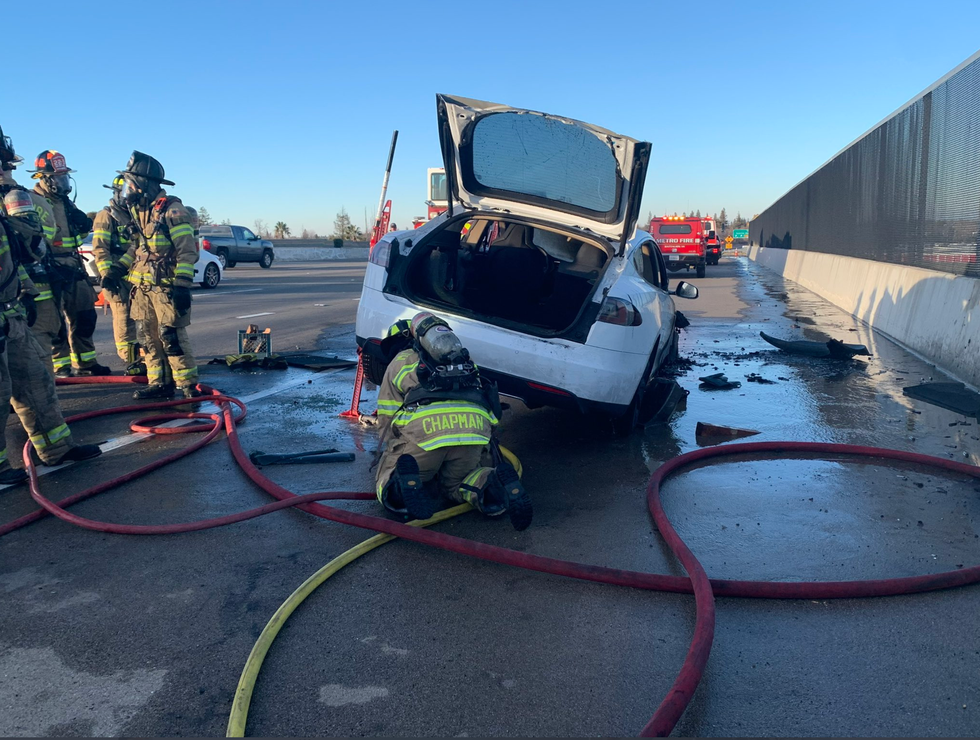
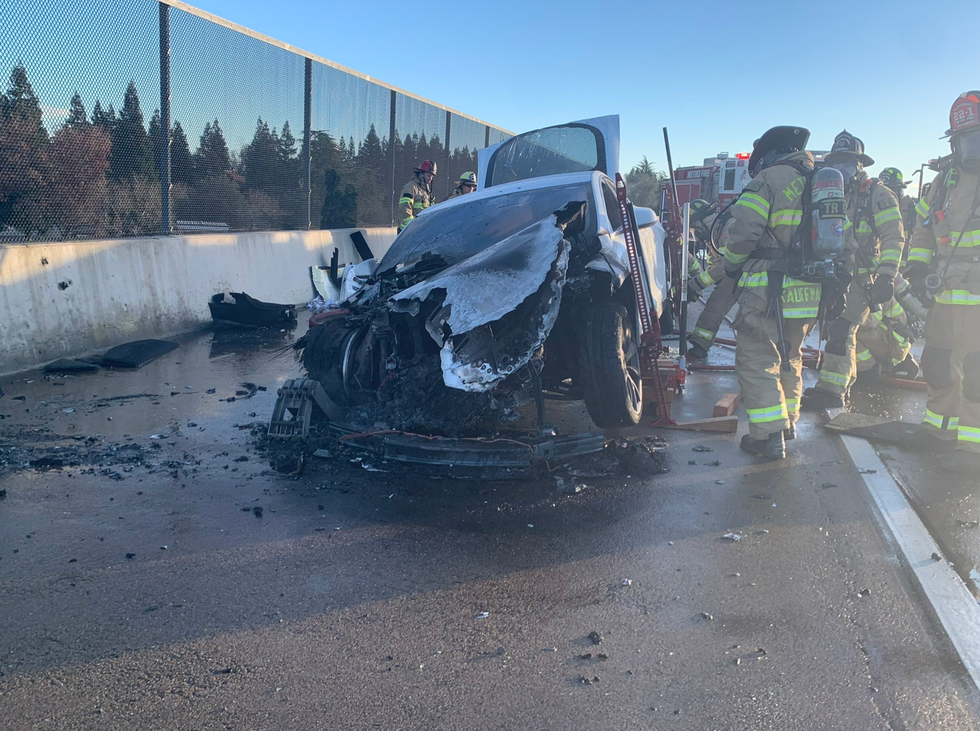
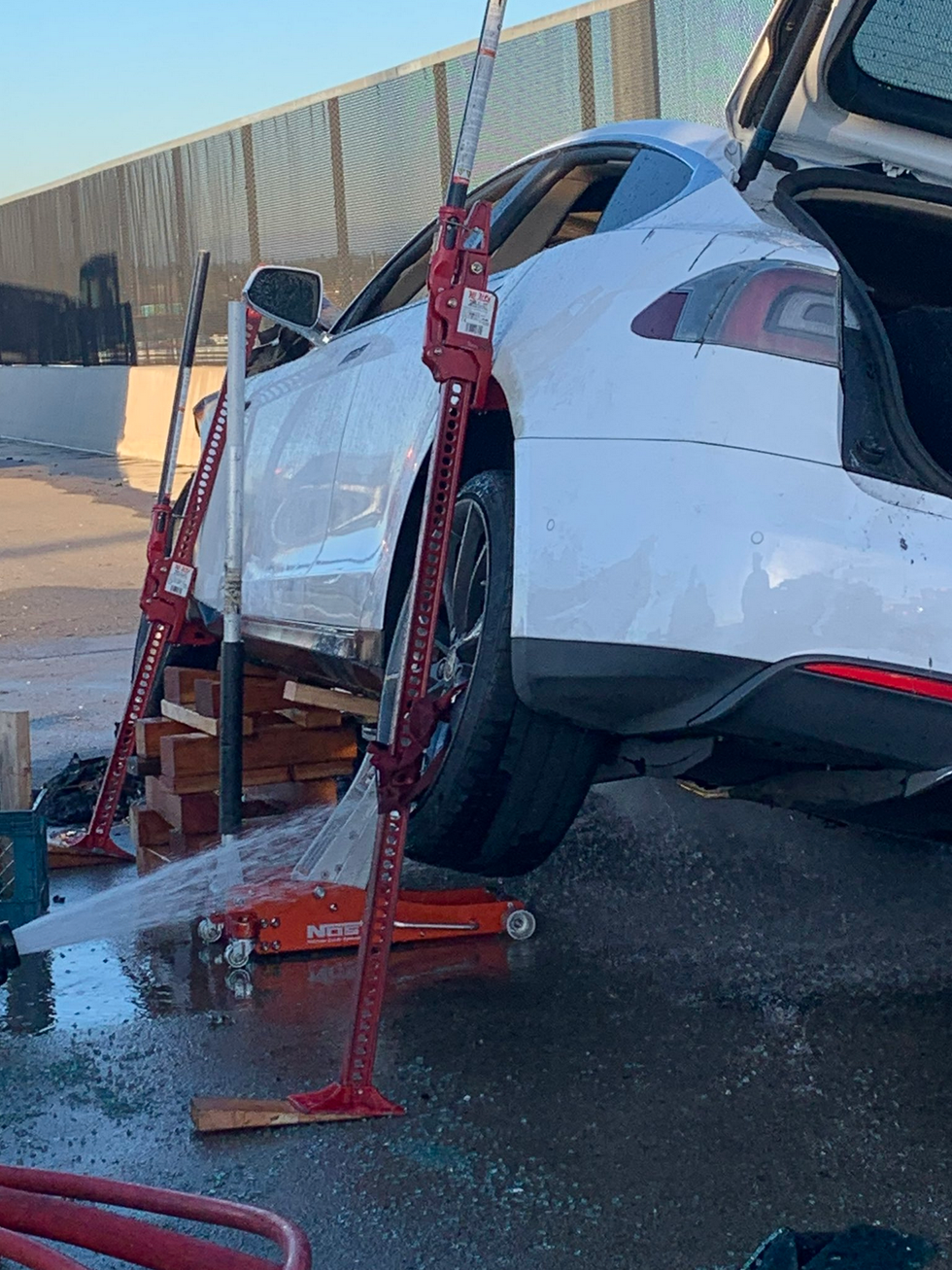
Metro Fire posted more images and video from the scene, tweeting:
"The vehicle battery compartment spontaneously caught fire while it was traveling freeway speeds on EB Hwy 50."
"The fire was extinguished with approx 6,000 gallons of water, as the battery cells continued to combust."
"Thankfully no injuries were reported."
\u201cThe vehicle battery compartment spontaneously caught fire while it was traveling freeway speeds on EB Hwy 50. The fire was extinguished with approx 6,000 gallons of water, as the battery cells continued to combust. Thankfully no injuries were reported.\u201d— Metro Fire of Sacramento (@Metro Fire of Sacramento) 1674954098
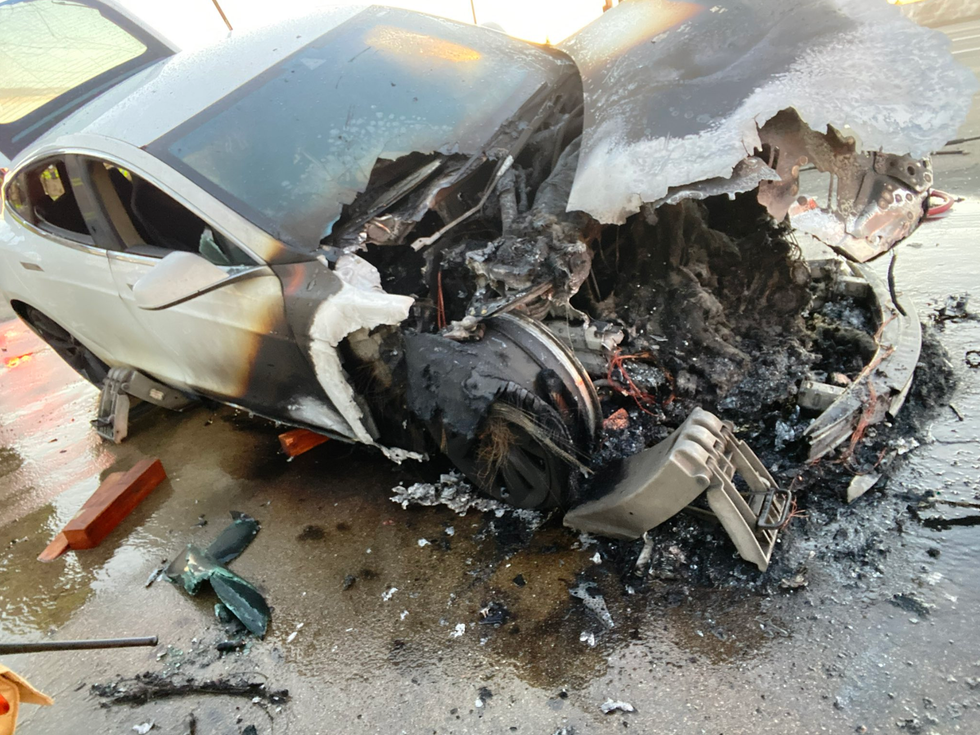
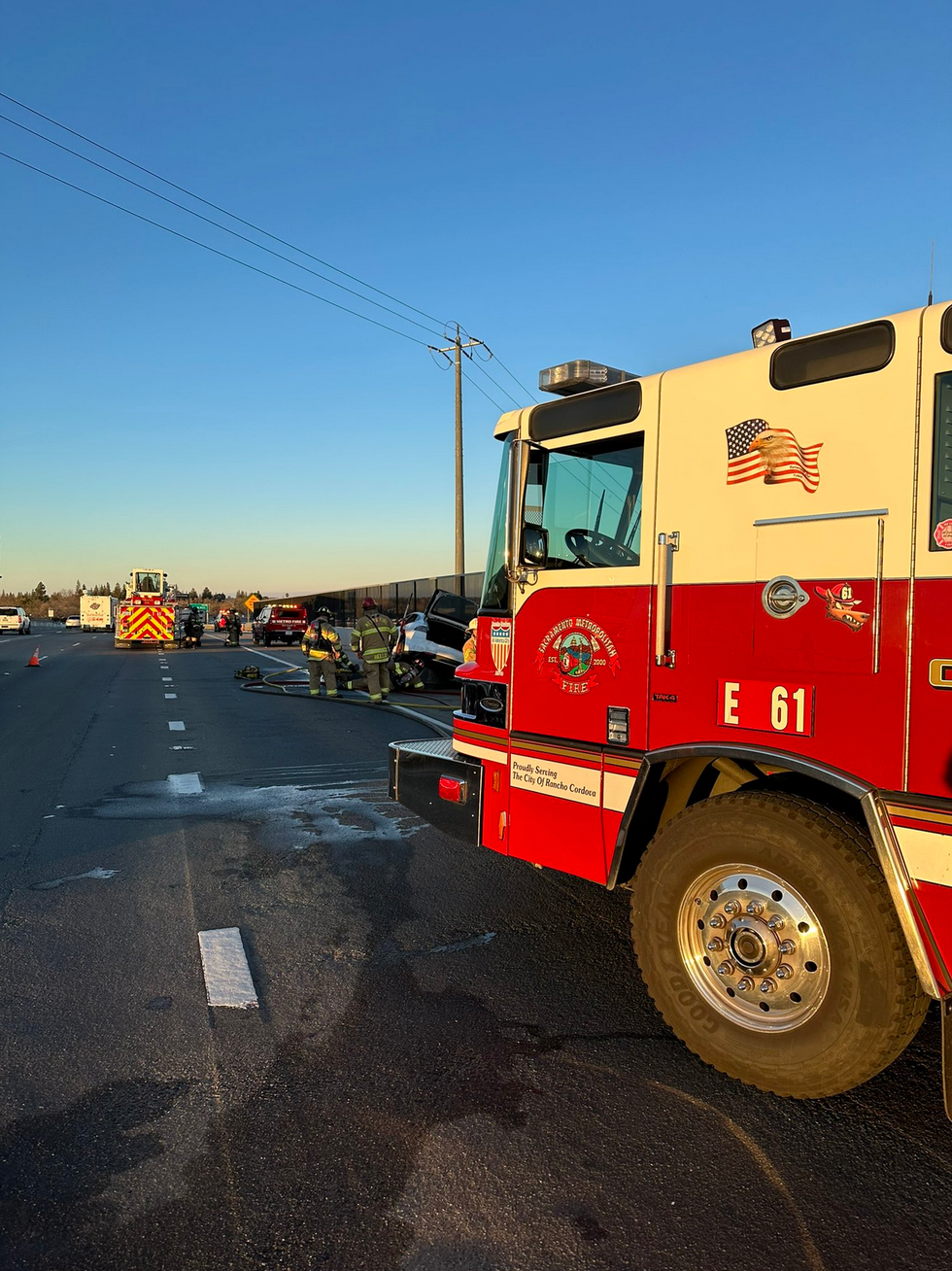
Skeptical Twitter users questioned the District's handling of the fire.
Some even accused them of wasting water in a state that has suffered prolonged periods of drought.
\u201c@metrofirepio Well there goes the little rain water we got a few weeks ago \ud83c\udf27\ufe0f\u201d— Metro Fire of Sacramento (@Metro Fire of Sacramento) 1674954098
\u201c@metrofirepio Does owner have to pay for 6000 gallons of water?\u201d— Metro Fire of Sacramento (@Metro Fire of Sacramento) 1674954098
\u201c@metrofirepio That's green! 6k gallons?\u201d— Metro Fire of Sacramento (@Metro Fire of Sacramento) 1674954098
\u201c@metrofirepio Well there goes CA water supply, right down the drain !\u201d— Metro Fire of Sacramento (@Metro Fire of Sacramento) 1674954098
\u201c@metrofirepio Send the water bill to Musk\u201d— Metro Fire of Sacramento (@Metro Fire of Sacramento) 1674954098
In response, Metro Fire shared a screenshot from a page of Tesla's manual showing they followed the suggested line of action requiring large quantities of water.
\u201c@mynetsecaccount Tesla\u2019s emergency manual\u2026 \ud83d\udd25\u201d— Metro Fire of Sacramento (@Metro Fire of Sacramento) 1674954098
According to Tesla's official guide:
"If the battery catches fire, is exposed to high heat, or is generating heat or gases, use large amounts of water to cool the battery."
"It can take between approximately 3,000-8,000 gallons (11,356-30,283 liters) of water, applied directly to the battery, to fully extinguish and cool down a battery fire; always establish or request additional water supply early."
The documentation added:
"If safety permits, lift or tilt the vehicle for more direct access to the battery."
\u201c@metrofirepio A NEW CHEMICAL NEEDS TO BE FOUND TO FIGHT EV CAR FIRES OR THIS WILL BE REALLY BAD FOR THE FUTURE\u201d— Metro Fire of Sacramento (@Metro Fire of Sacramento) 1674954098
\u201c@metrofirepio @elonmusk interested to know your thoughts on this. Probably an opportunity to build something to put out battery fires and sell it to Firefighters.\u201d— Metro Fire of Sacramento (@Metro Fire of Sacramento) 1674954098
\u201c@metrofirepio Just another reason to avoid one while on the road. Most who drive these vehicles seemingly do not know how to drive....\u201d— Metro Fire of Sacramento (@Metro Fire of Sacramento) 1674954098
A Vox article noted EV fires are statistically less frequent than gas-powered cars and firefighters are adapting to different fire extinguishing methods accordingly.
The article stated:
"Although they’re relatively rare, electric car fires present a new technical and safety challenge for fire departments."
"These fires burn at much higher temperatures and require a lot more water to fight than conventional car fires."
Firefighters told the media outlet when the hard-to-reach EV battery pack–which consists of thousands of smaller lithium-ion cells–somehow becomes damaged:
"One or more lithium-ion cells can short-circuit, heating up the battery."
"At that point, the tiny membranes that separate the cathode and the anode melt, exposing the highly flammable liquid electrolyte."
"Once a fire ignites, heat can spread to even more cells, triggering a phenomenon called thermal runaway."
In that instance, flames continue igniting throughout the battery resulting in a conflagration "that can last for hours."

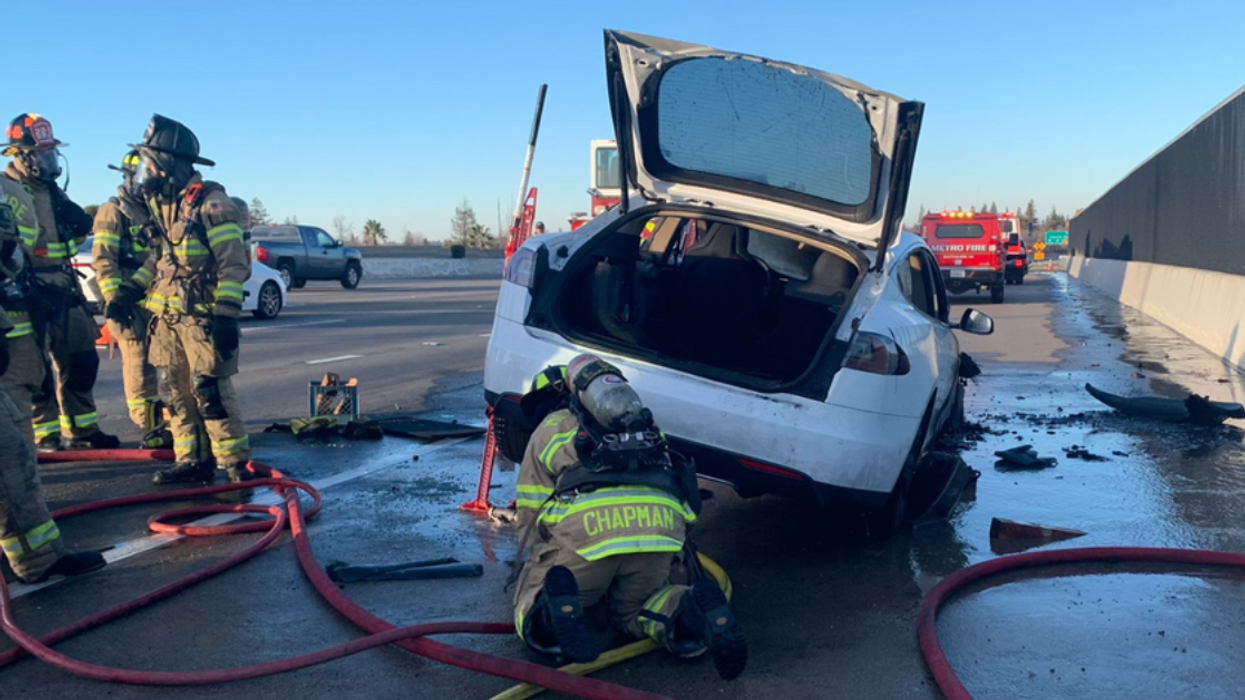











 @doubleunder.bsky.social/Bluesky
@doubleunder.bsky.social/Bluesky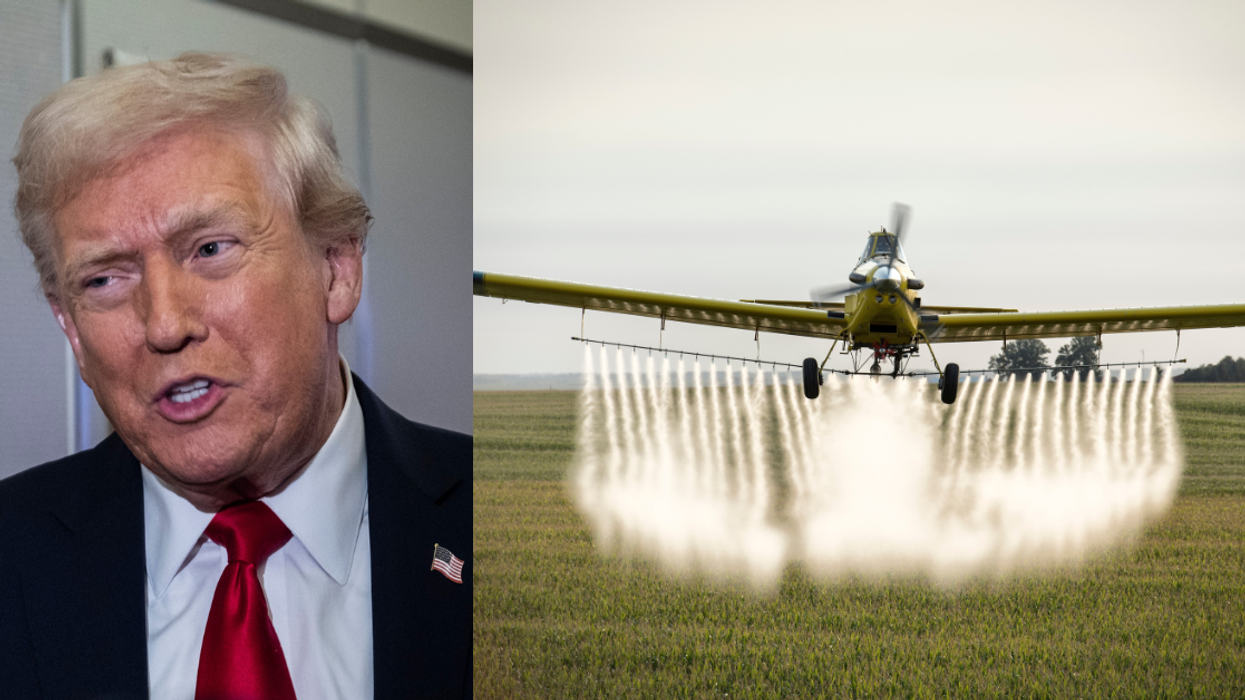
 @realDonaldTrump/X
@realDonaldTrump/X r/Politics/Reddit
r/Politics/Reddit r/Politics/Reddit
r/Politics/Reddit r/Politics/Reddit
r/Politics/Reddit r/Politics/Reddit
r/Politics/Reddit r/Politics/Reddit
r/Politics/Reddit r/Politics/Reddit
r/Politics/Reddit r/Politics/Reddit
r/Politics/Reddit r/Politics/Reddit
r/Politics/Reddit r/Politics/Reddit
r/Politics/Reddit r/Politics/Reddit
r/Politics/Reddit r/Politics/Reddit
r/Politics/Reddit r/Politics/Reddit
r/Politics/Reddit r/Politics/Reddit
r/Politics/Reddit r/Politics/Reddit
r/Politics/Reddit r/Politics/Reddit
r/Politics/Reddit r/Politics/Reddit
r/Politics/Reddit r/Politics/Reddit
r/Politics/Reddit r/Politics/Reddit
r/Politics/Reddit r/Politics/Reddit
r/Politics/Reddit r/Politics/Reddit
r/Politics/Reddit r/Politics/Reddit
r/Politics/Reddit r/Politics/Reddit
r/Politics/Reddit r/Politics/Reddit
r/Politics/Reddit r/Politics/Reddit
r/Politics/Reddit
